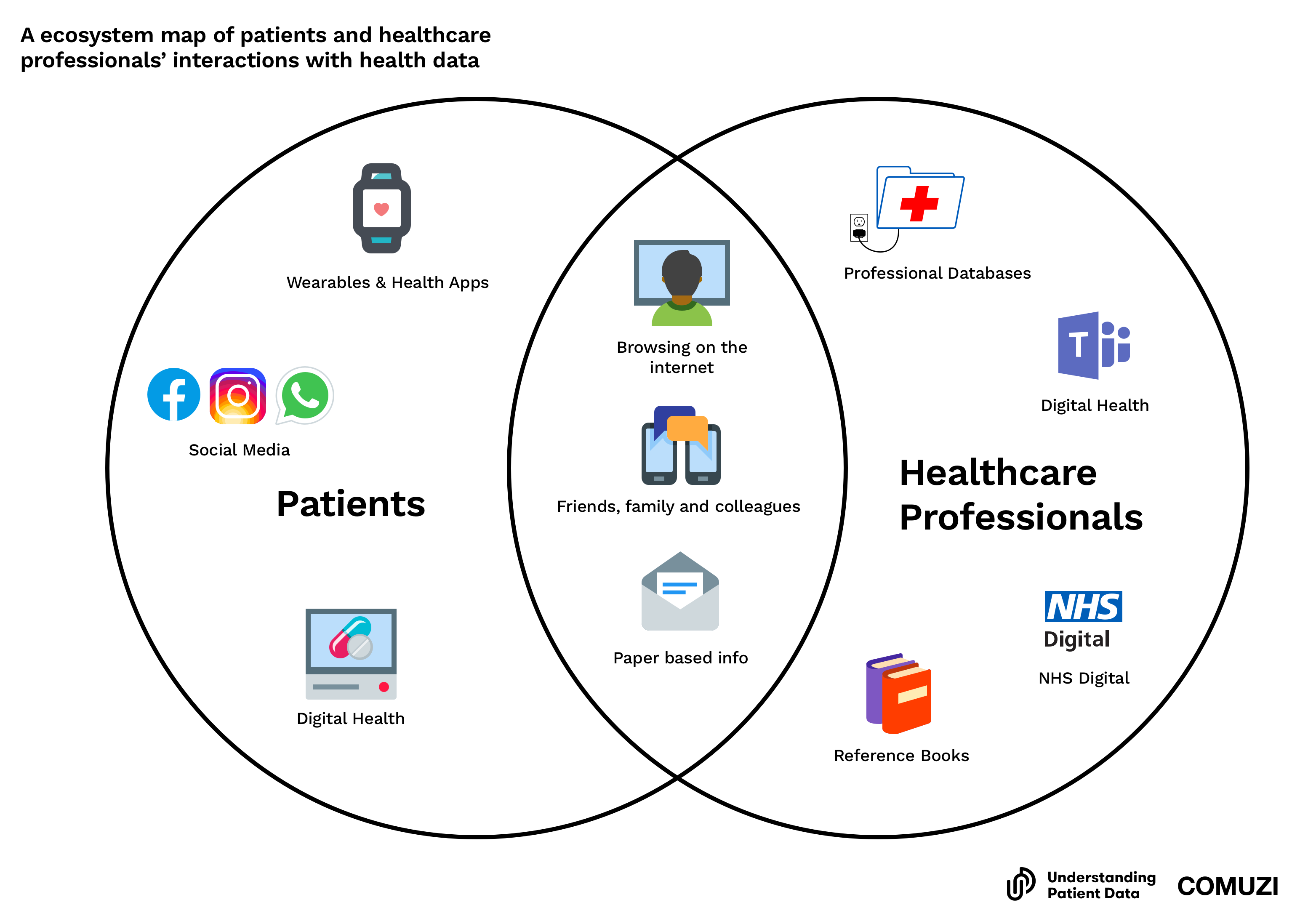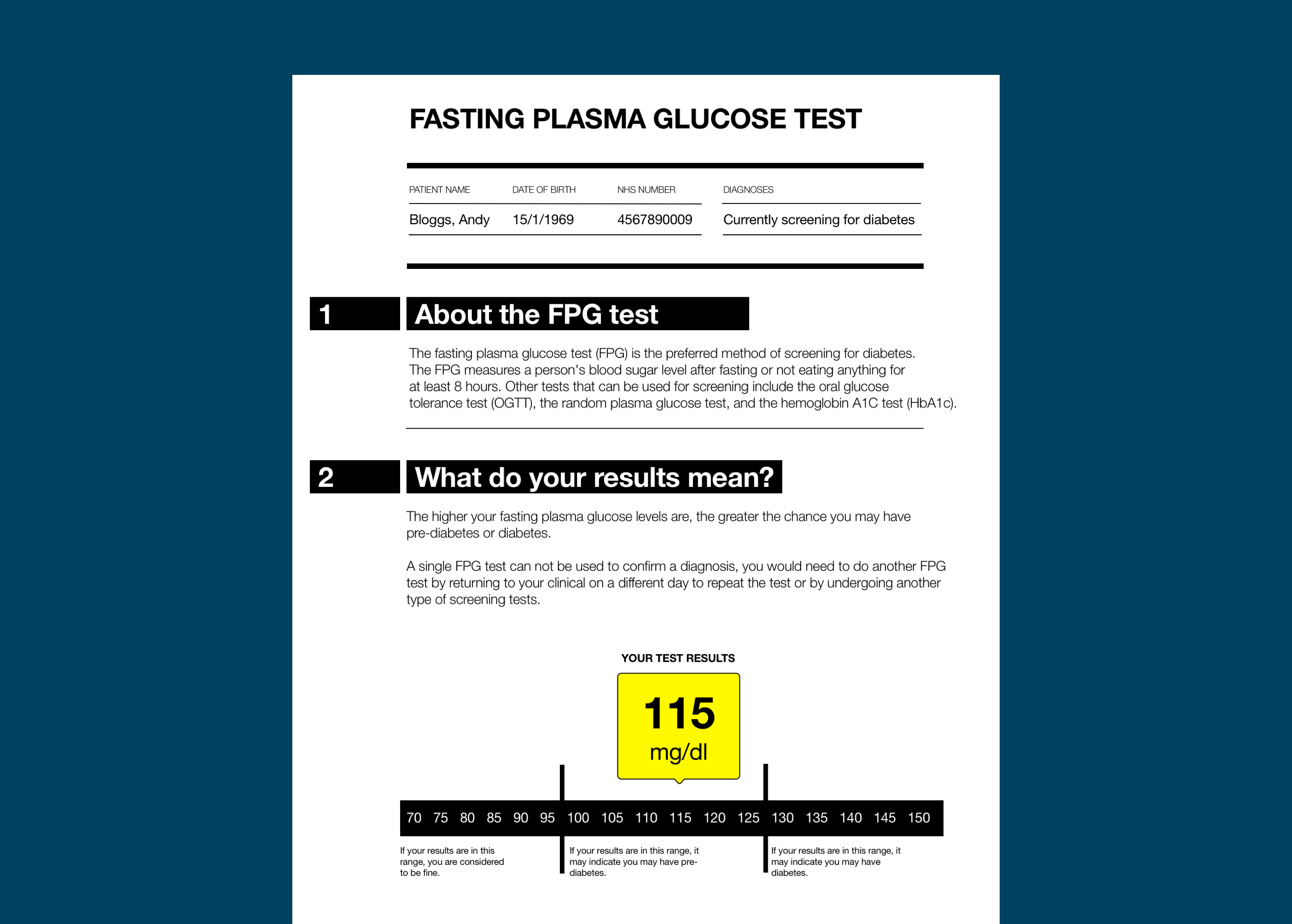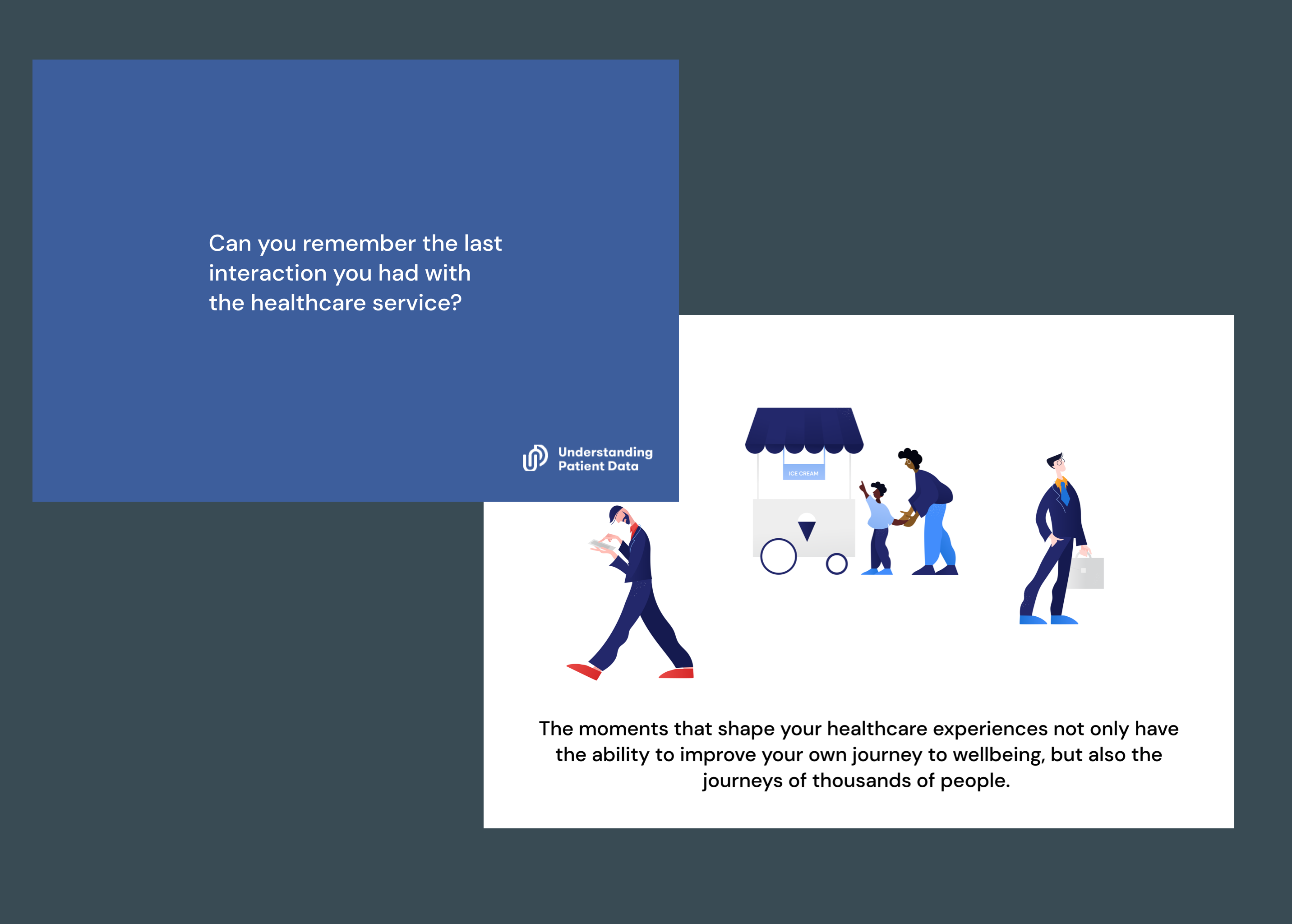Brief
Working with Understanding Patient Data, a team based at the Wellcome Trust to identify the moments in people’s healthcare journeys where it would be meaningful for them to find out more about how health data is used.
Client
Understanding Patient Data/Wellcome Trust
What we did
Explanations about the use of patient data are often abstract, using research or insights that don’t closely relate to people’s lives and what they care about.
We worked with the UPD team to learn how people interact with the health system and consider what matters to them.
We engaged in design research, speaking with healthcare professionals and members of the public, to find moments where people would be open to learning about data. We wanted to find opportunities to explain to people how data is used to inform their care, and how data about them could be used to improve care for others, for example through planning services or research.

Once we’d identified possible moments to explain patient data, we developed and iterated a series of prototypes to test out our ideas.
The prototypes aren’t concrete products or solutions, instead they show practical examples of how to explain patient data at the right time, with the right level of information for that context.
Below, we talk about two prototypes we created and what we learnt:
Results
One of the prototypes we developed was a blood test results letter - specifically a ‘fasting plasma glucose test’ - which is used to screen people for diabetes. We redesigned the letter to show how research using data from health records had helped establish this person's likelihood of developing diabetes.

Participants said that learning about the data behind the result would help them understand more about their health and could help motivate them to change behaviour. They also said the letter helped them learn about why it's important to collect data and that their care was informed by data about other people.
The waiting room was identified in research as a moment where there’s an opportunity to explain patient data, so we designed a prototype video for that setting.

The video goes into more detail than the other prototypes on how patient data is collected, used and protected. Whilst participants said the video helped them understand how the healthcare system uses data, it also raised far more questions and concerns than the other prototypes, mostly about security and third-party access to data.
Provoking questions is not necessarily a bad thing but people need to be able to go somewhere for answers, which is hard in a waiting room context.
